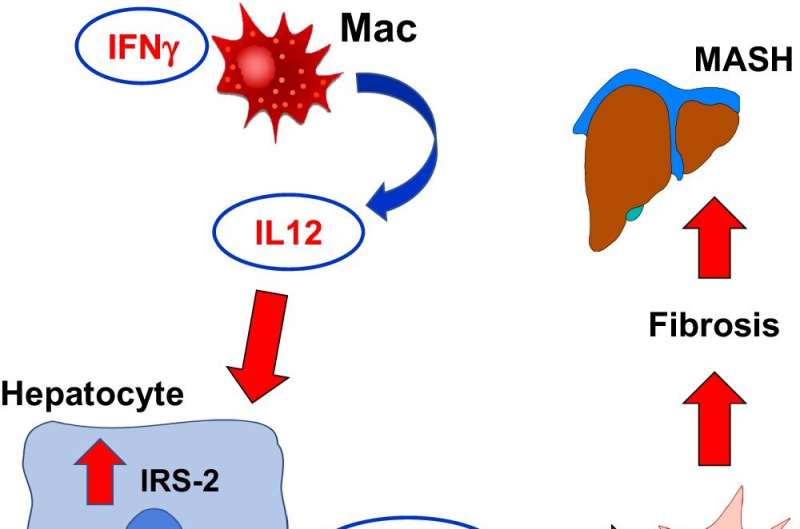This article has been reviewed according to Science X's editorial process and policies. Editors have highlighted the following attributes while ensuring the content's credibility:
fact-checked
peer-reviewed publication
trusted source
proofread
Novel pathway could lead to potential treatment for metabolic liver disease

Research from the lab of Jason Kim, Ph.D., professor of molecular medicine and medicine, identified a novel pathway in the progression of metabolic liver disease that could be targeted for potential therapies.
The findings, published in Nature Communications, describe how the circulating protein interferon-γ, which is higher in people with obesity, causes inflammation. By blocking this pathway, Dr. Kim and colleagues were able to protect animal models from developing metabolic dysfunction-associated steatohepatitis (MASH).
"The liver can normally store some fat, but something about that process is where inflammation develops," said Kim. "That's what leads to this pathogenic disease progression. We think that we found a way to stop that from happening."
MASH, the more severe form of metabolic liver disease, is characterized by inflammation, insulin resistance and liver scarring (fibrosis). Thirty percent of people over age 60 and three out of four of people with obesity have metabolic liver disease, signifying a pressing global health issue. Despite its prevalence, only one drug has recently been approved by the Food and Drug Administration for treating it.
"Normally, people with MASH would be counseled to change diet and exercise. However, this discovery would help us prevent the disease from progressing without needing patients to make major lifestyle changes," Kim said.

He explained that it has long been known that inflammation develops during metabolic liver disease, but how this inflammation occurs and how it affects the liver cells have not been understood.
Using novel transgenic mice, the research team showed that blocking these macrophages or immune cells and their communication with liver cells reduces inflammation and the progression of metabolic liver disease in obesity, a first according to Kim.
"Understanding the role of inflammation in the liver and identifying molecular targets to block this process will lead to new therapies to treat the epidemic population," said Kim.
The next step is to identify the nature of the crosstalk between liver macrophages and hepatocytes or liver cells and how this communication can be modified to stop the progression of metabolic liver disease, Kim said.
More information: Randall H. Friedline et al, IFNγ-IL12 axis regulates intercellular crosstalk in metabolic dysfunction-associated steatotic liver disease, Nature Communications (2024). DOI: 10.1038/s41467-024-49633-y




















